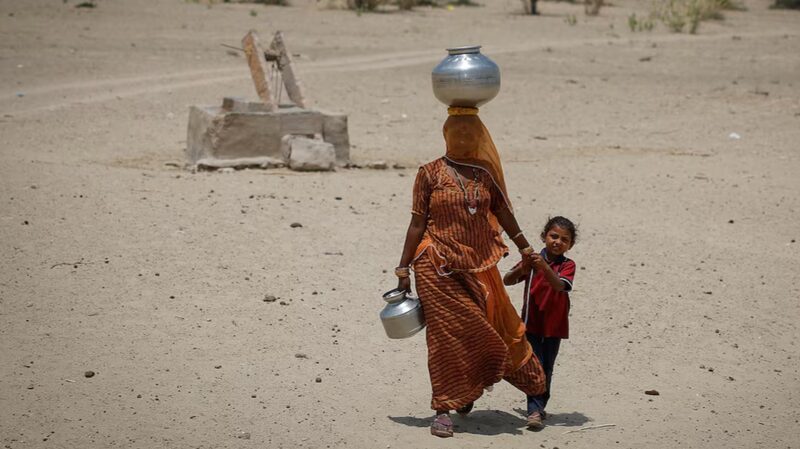South Asia is currently grappling with severe weather extremes, with deadly heatwaves sweeping across India and Pakistan, while Bangladesh and parts of eastern India prepare for the impending cyclone Remal.
In western India, particularly in Rajasthan's desert town of Phalodi, temperatures soared to 49 degrees Celsius on Friday, marking the highest temperature recorded in the country this year. This extreme heat has led to the tragic deaths of at least 11 people, though officials are still investigating the exact causes as medical examinations are incomplete.
The heatwave has extended beyond Rajasthan, affecting the northern states of Punjab and Haryana, where officials have issued warnings of continuing extreme temperatures. In the western city of Ahmedabad, two fatalities from heat stroke have been reported, and hospitals are currently treating numerous individuals suffering from heat-related illnesses.
India typically declares a heatwave when temperatures exceed 40 degrees Celsius in the plains, which is a significant rise of at least 4.5 degrees above normal. This year, scientists predict an increase in heatwave days, attributing the rise to fewer non-monsoon thunderstorms and the influence of a weakening dry El Niño weather phenomenon.
Meanwhile, Pakistan is experiencing a severe heatwave affecting around 26 districts, with temperatures expected to reach up to 50 degrees Celsius in some cities in the southern province of Sindh by Friday. The extreme heat has already caused delays in school examinations due to unsafe conditions.
Adding to the region's challenges, the India Meteorological Department has forecasted that cyclonic storm Remal is set to make landfall in Bangladesh and parts of West Bengal in eastern India on Sunday. The storm is expected to bring wind speeds of up to 120 kilometers per hour, posing significant risks of flooding and infrastructural damage.
In southern India, the state of Kerala has reported seven deaths this week following unusually heavy pre-monsoon rains, which were about 18 percent heavier than normal. The excessive rainfall has led to flooding and disruptions in flight operations in several areas, with expectations of continued heavy to extremely heavy rain in the coming days.
International scientists have noted that the extreme temperatures experienced across Asia last month have been exacerbated by human-driven climate change, highlighting the urgent need for sustainable environmental policies and practices to mitigate such devastating weather events.
Reference(s):
cgtn.com




